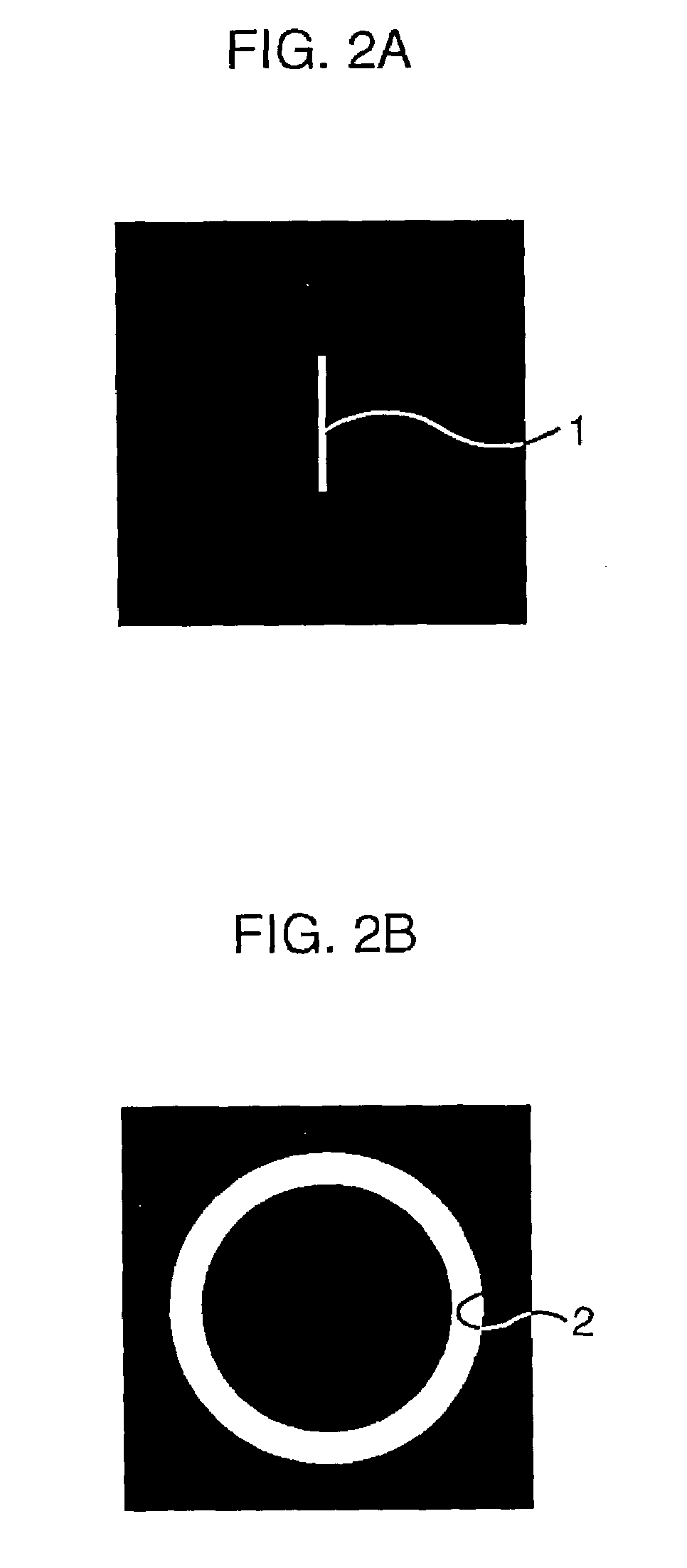Test photomask, flare evaluation method, and flare compensation method
a technology of flare compensation and photomask, which is applied in the field of flare compensation method and flare evaluation method, can solve the problems of no preferred technique, unintended change in the shape and line width of the pattern to be transferred,
- Summary
- Abstract
- Description
- Claims
- Application Information
AI Technical Summary
Benefits of technology
Problems solved by technology
Method used
Image
Examples
modified examples
[0063]Now, various modified examples of the first embodiment will be described. These examples disclose techniques of quantitatively evaluating local flare as in the first embodiment, but are different therefrom in the test photomask. Note that components and so on corresponding to those in the first embodiment are designated the same reference numerals, and description thereof is omitted.
modified example 1
[0064]FIGS. 7A to 7D are schematic diagrams showing the general configuration of a test photomask which is a component of a flare evaluating apparatus according to the modified example 1 of the first embodiment.
[0065]A test photomask 21 is constituted by, as shown in FIG. 7A, a pair of photomasks 21a and 21b in which the photomask 21a is formed with a line pattern group 22, and the photomask 21b is formed with a zone pattern group 23 respectively.
[0066]In the line pattern group 22, as shown in FIG. 7B, only a plurality of line patterns 1 are formed apart from each other to such an extent as not to be affected by local flare. In the zone pattern group 23, as shown in FIG. 7C, only a portion formed with no pattern (shown at the uppermost position) and zone patterns 2 which are sequentially increased in inside diameter and outside diameter, are formed adjacent to each other. The relation in size between the zone patterns 2 is similar to that in FIGS. 4A to 4D. The line pattern group 22...
modified example 2
[0071]FIGS. 8A to 8D are schematic diagrams showing the general configuration of a test photomask which is a component of a flare evaluating apparatus according to a modified example 2 of the first embodiment.
[0072]A test photomask 31 is constituted, as shown in FIG. 8A, by one photomask in which a line pattern group 32 and a zone pattern group 33 are formed apart enough from each other to such an extent as not to be affected in exposure.
[0073]In the line pattern group 32, as shown in FIG. 8B, only a plurality of line patterns 1 are provided apart from each other to such an extent as not to be affected by local flare. In the zone pattern group 33, as shown in FIG. 8C, only a portion formed with no pattern (shown at the uppermost position) and zone patterns 2 which are sequentially increased in inside diameter and outside diameter, are provided apart from each other to such an extent as not to be affected by local flare. The relation in size between the zone patterns 2 is similar to ...
PUM
| Property | Measurement | Unit |
|---|---|---|
| wavelength | aaaaa | aaaaa |
| diameter | aaaaa | aaaaa |
| diameter | aaaaa | aaaaa |
Abstract
Description
Claims
Application Information
 Login to View More
Login to View More - R&D
- Intellectual Property
- Life Sciences
- Materials
- Tech Scout
- Unparalleled Data Quality
- Higher Quality Content
- 60% Fewer Hallucinations
Browse by: Latest US Patents, China's latest patents, Technical Efficacy Thesaurus, Application Domain, Technology Topic, Popular Technical Reports.
© 2025 PatSnap. All rights reserved.Legal|Privacy policy|Modern Slavery Act Transparency Statement|Sitemap|About US| Contact US: help@patsnap.com



